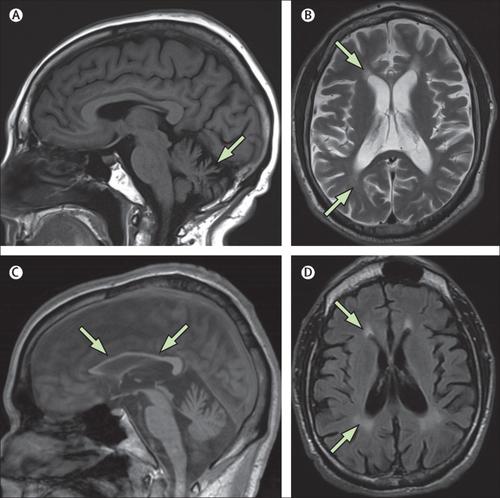当前位置:
X-MOL 学术
›
Lancet Neurol.
›
论文详情
Our official English website, www.x-mol.net, welcomes your feedback! (Note: you will need to create a separate account there.)
Hereditary spastic paraplegia: from diagnosis to emerging therapeutic approaches
The Lancet Neurology ( IF 46.5 ) Pub Date : 2019-12-01 , DOI: 10.1016/s1474-4422(19)30235-2 Samuel Shribman 1 , Evan Reid 2 , Andrew H Crosby 3 , Henry Houlden 4 , Thomas T Warner 1
The Lancet Neurology ( IF 46.5 ) Pub Date : 2019-12-01 , DOI: 10.1016/s1474-4422(19)30235-2 Samuel Shribman 1 , Evan Reid 2 , Andrew H Crosby 3 , Henry Houlden 4 , Thomas T Warner 1
Affiliation

|
Hereditary spastic paraplegia (HSP) describes a heterogeneous group of genetic neurodegenerative diseases characterised by progressive spasticity of the lower limbs. The pathogenic mechanism, associated clinical features, and imaging abnormalities vary substantially according to the affected gene and differentiating HSP from other genetic diseases associated with spasticity can be challenging. Next generation sequencing-based gene panels are now widely available but have limitations and a molecular diagnosis is not made in most suspected cases. Symptomatic management continues to evolve but with a greater understanding of the pathophysiological basis of individual HSP subtypes there are emerging opportunities to provide targeted molecular therapies and personalised medicine.
中文翻译:

遗传性痉挛性截瘫:从诊断到新兴治疗方法
遗传性痉挛性截瘫 (HSP) 描述了一组异质的遗传性神经退行性疾病,其特征是下肢进行性痉挛。发病机制、相关的临床特征和影像学异常因受影响的基因而有很大差异,将 HSP 与其他与痉挛相关的遗传疾病区分开来可能具有挑战性。新一代基于测序的基因组现已广泛使用,但存在局限性,并且在大多数疑似病例中未进行分子诊断。症状管理不断发展,但随着对个别 HSP 亚型的病理生理基础有了更深入的了解,提供靶向分子疗法和个性化医疗的机会正在出现。
更新日期:2019-12-01
中文翻译:

遗传性痉挛性截瘫:从诊断到新兴治疗方法
遗传性痉挛性截瘫 (HSP) 描述了一组异质的遗传性神经退行性疾病,其特征是下肢进行性痉挛。发病机制、相关的临床特征和影像学异常因受影响的基因而有很大差异,将 HSP 与其他与痉挛相关的遗传疾病区分开来可能具有挑战性。新一代基于测序的基因组现已广泛使用,但存在局限性,并且在大多数疑似病例中未进行分子诊断。症状管理不断发展,但随着对个别 HSP 亚型的病理生理基础有了更深入的了解,提供靶向分子疗法和个性化医疗的机会正在出现。











































 京公网安备 11010802027423号
京公网安备 11010802027423号